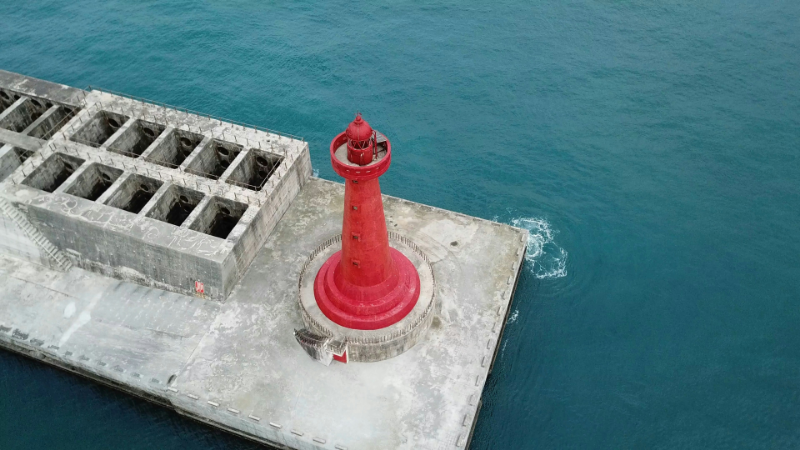Making sense of our connected world

The internet is already fragmented
The internet community is worried about the impending fragmentation of cyberspace. This discourse rests on very simplistic understandings of sovereignty and territory. By correcting these, argues Daniel Lambach (Normative Orders), we see that the internet is already much more fragmented than previously thought but is still holding together.
Open web vs. fragmentation
There is much talk about the impending fragmentation or splintering of the internet into loosely coupled sub-networks. With various governments mooting plans to recreate national boundaries in cyberspace, e.g. through national Domain Name Systems or data localisation laws, many observers worry that the era of “open web” may be drawing to a close. A report to the World Economic Forum, with some understatement, calls internet fragmentation “a rather hot topic of late” (p. 7).
This debate will remind seasoned observers of the cyber-utopianism of John Perry Barlow’s infamous Declaration of the Independence of Cyberspace. But this narrative of antiquated nation-states encroaching on the virgin territory of an ungoverned and ungovernable electronic frontier is off the mark. Cyberspace cannot be conceived as separate from the “offline world”. States assert their authority over cyberspace by translating familiar territorial logics to this “uncharted territory” (Neuland, as it was once called by German Chancellor Angela Merkel). Corporations create territories through sign-up requirements and limiting interoperability between internet ecosystems. Private users and creators set up virtual territories in online communities, social media or closed chat groups.
The three assumptions of territorialisation
These are all examples of the same process. I call it territorialisation – the creation, maintenance and recreation of spaces. But it would be misleading to treat territorialisation as inevitably leading to a fragmentation of the internet. On the contrary, territorialisation has been a ubiquitous feature of cyberspace since its inception. And yet diagnoses of internet fragmentation still operate from three misleading assumptions: First, they are based on an outdated notion of territory and of the state as a national-territorial ‘container’. Second, the debate is partly organised around the notion of sovereignty and whether it, or some analogy, can exist in cyberspace. Third, that territories in cyberspace are fundamentally incompatible with the network character of the internet.
I want to challenge all three of these assumptions. First, territory and borders should not be thought of as static containers and immutable structures. We are better off taking inspiration from critical geographers like Stuart Elden who argue that territory is a political technology. So territorialisation is about more than just erecting boundaries, it is about claiming and exercising control through the definition, delimitation and inscription of space. Accordingly, territories in cyberspace can be shifting, adaptable, even mobile.
Second, discussions of sovereignty in cyberspace are mostly unhelpful political posturing. Territorialisation involves exercises of power that do not necessarily include formal claims to international legal sovereignty. Such moves may not even imply absolute control or some analogy to the much-vaunted monopoly of force – merely claiming control is already a meaningful act. Hence, territories can be functional, overlapping and non-exclusive.
Third, while the internet is constituted through networks, actors, whether states, corporations, civil society or individual users, tend to think of it in terms of spaces and territories. Barlow’s Declaration is as much evidence of this as the Neuland metaphor, as are debates about cyberwar/cyberdefense which rest on a conceptualization of national territory in cyberspace. This creates tensions, of which the “internet fragmentation” debate itself is one example. We are best served by not trying to resolve these tensions but by noticing the mutual effects of networks and territories. On the one hand, territories shape the architecture of links that constitutes the World Wide Web, e.g. through legal penalties for hosting or linking to illicit content. On the other hand, networks affect how territories can be constructed and used, for instance by making certain kinds of censorship more or less feasible.
Bottom line: The fragmented internet continues to exist
In sum, it does not make sense to speak of a singular cyberspace that is in danger of breaking apart. It is better to think of the internet as a set of changing, overlapping and conflicting “cyber-territories”. For example, much of the recent back-and-forth between Facebook and German courts can be read in this way, as an attempt to enforce laws and regulations where a “national” (Germany) and a “corporate territory” (Facebook) intersect. Territorialisation is a persistent feature of the internet and is not going away.
Does this mean everything is fine and that warnings about the fragmentation of cyberspace are overblown? No, not quite. While we already see much more territorialisation that is not as destructive as the fragmentation discourse suggests, it does not follow that a substantially more destructive kind of fragmentation is impossible. Recent moves toward nationalised Domain Name Systems represent such a danger. Nonetheless, at least thus far, the internet has withstood a substantial degree of territorialisation and, absent far-reaching technical upheavals, will likely continue to work as before.
This post represents the view of the author and does not necessarily represent the view of the institute itself. For more information about the topics of these articles and associated research projects, please contact info@hiig.de.

You will receive our latest blog articles once a month in a newsletter.
Platform governance
Escaping the digitalisation backlog: data governance puts cities and municipalities in the digital fast lane
The Data Governance Guide empowers cities to develop data-driven services that serve citizens effectively.
Online echoes: the Tagesschau in Einfacher Sprache
How is the Tagesschau in Einfacher Sprache perceived? This analysis of Reddit comments reveals how the new simplified format news is discussed online.
Opportunities to combat loneliness: How care facilities are connecting neighborhoods
Can digital tools help combat loneliness in old age? Care facilities are rethinking their role as inclusive, connected places in the community.



